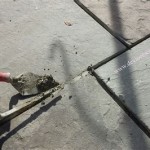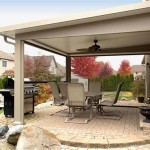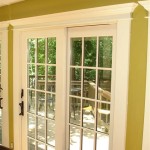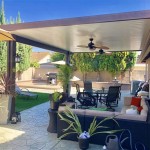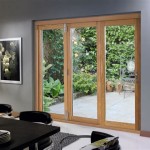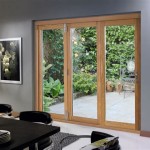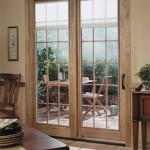Make Your Patio A Conversation Hub With The Right Furniture For You
The patio, when thoughtfully furnished, transcends its basic function as an outdoor extension of the home. It becomes a central space for social interaction, relaxation, and enjoyment of the surrounding environment. Selecting the appropriate furniture is paramount in transforming a patio into a vibrant conversation hub that fosters connection and comfort.
The task of choosing patio furniture involves several considerations, extending beyond mere aesthetics. Factors such as the size of the patio, the intended purpose of the space, the climate, and the desired style all play crucial roles in determining the most suitable furniture options. A poorly furnished patio can feel unwelcoming and hinder conversation, while a well-designed space encourages people to gather, relax, and engage with one another.
The durability and weather resistance of materials are also critical considerations. Outdoor furniture is exposed to the elements, necessitating materials that can withstand sun, rain, and temperature fluctuations without deteriorating. Maintenance requirements should also be factored in, as some materials require more upkeep than others to maintain their appearance and longevity.
Considering the Space and Intended Use
Before embarking on the furniture selection process, a thorough assessment of the patio's dimensions is essential. A small patio requires furniture that is proportionally sized to avoid overcrowding. Conversely, a large patio can accommodate more substantial pieces and multiple seating arrangements. The flow of movement within the space should also be carefully considered to ensure that furniture does not impede traffic or create obstacles.
The intended use of the patio significantly influences the type of furniture required. If the primary purpose is dining, a dining table and chairs are essential. For lounging and relaxation, comfortable seating options such as sofas, armchairs, and chaise lounges are more appropriate. If the patio is intended for both dining and lounging, a combination of furniture types is necessary to cater to both activities. The number of people who will typically use the patio should also be taken into account when determining the seating capacity.
Defining the patio's purpose also informs the selection of ancillary furniture. Side tables provide convenient surfaces for drinks and snacks, while coffee tables serve as central gathering points for conversation. Outdoor rugs can define specific areas within the patio and add a touch of warmth and comfort. Decorative elements such as cushions, throws, and planters can further enhance the ambiance and create a more inviting atmosphere.
The orientation of the patio with respect to the sun and wind is another important consideration. If the patio is exposed to direct sunlight for extended periods, shade structures such as umbrellas or pergolas are necessary to provide relief from the heat. Windbreaks, such as screens or hedges, can provide protection from strong winds and create a more comfortable environment. Positioning furniture strategically to take advantage of natural shade and wind protection can greatly enhance the usability of the patio.
Material Selection and Durability
The choice of materials for patio furniture is critical due to their exposure to the elements. Different materials offer varying levels of durability, weather resistance, and aesthetic appeal. Understanding the characteristics of each material is essential for making informed decisions that will ensure the longevity and performance of the furniture.
Teak is a popular choice for outdoor furniture due to its natural resistance to rot, decay, and insects. It is a dense hardwood that can withstand exposure to sun, rain, and temperature fluctuations without deteriorating. Teak furniture develops a silver-gray patina over time if left untreated, which many people find aesthetically pleasing. However, teak can be expensive compared to other materials.
Aluminum is another common material for patio furniture due to its lightweight, durability, and resistance to rust. Powder-coated aluminum is particularly well-suited for outdoor use, as the powder coating provides an additional layer of protection against the elements. Aluminum furniture is relatively easy to maintain and can be cleaned with soap and water. It is also a more affordable option than teak.
Wicker, both natural and synthetic, offers a classic and comfortable look for patio furniture. Natural wicker is made from plant fibers and requires regular maintenance to prevent it from drying out and cracking. Synthetic wicker, also known as resin wicker, is made from durable plastics that are resistant to sun, rain, and mildew. Synthetic wicker is a more practical choice for outdoor use due to its low maintenance requirements.
Plastic, particularly high-density polyethylene (HDPE), is a durable and weather-resistant option for patio furniture. HDPE is made from recycled plastic and is resistant to fading, cracking, and warping. Plastic furniture is also lightweight and easy to clean. However, it may not have the same aesthetic appeal as other materials.
Cushions and upholstery for patio furniture should be made from weather-resistant fabrics such as Sunbrella or Olefin. These fabrics are designed to withstand exposure to sun, rain, and mildew without fading or deteriorating. They are also easy to clean and maintain. Choosing cushions and upholstery in colors and patterns that complement the overall style of the patio can enhance the aesthetic appeal of the space.
Arranging Furniture for Conversation
The arrangement of furniture on a patio significantly impacts its functionality as a conversation hub. A well-designed layout can encourage interaction and create a more inviting atmosphere. Conversely, a poorly arranged patio can hinder conversation and make the space feel less comfortable.
Creating conversational groupings is essential for fostering interaction. Arranging seating in a circular or semi-circular configuration allows people to face each other and engage in conversation more easily. Avoid placing seating too far apart, as this can make it difficult for people to hear and participate in the conversation. A distance of approximately 8-10 feet between seating areas is generally considered optimal.
Incorporating a focal point can enhance the ambiance and draw people into the space. A fire pit, water feature, or outdoor rug can serve as a focal point and create a sense of warmth and intimacy. Positioning seating around the focal point can encourage people to gather and interact with one another. The focal point should be visually appealing and add to the overall aesthetic of the patio.
Providing ample space for movement is crucial for ensuring that people can move freely around the patio without feeling cramped or obstructed. Avoid overcrowding the space with too much furniture. Allow for adequate pathways between seating areas and other features of the patio. A clear and unobstructed flow of movement will make the patio more inviting and comfortable.
Utilizing different levels can add visual interest and create distinct areas within the patio. Incorporating raised platforms or sunken seating areas can define specific zones for dining, lounging, or conversation. Different levels can also help to create a sense of privacy and intimacy within a larger space.
Adding accessories such as cushions, throws, and planters can further enhance the comfort and ambiance of the patio. Cushions and throws provide added comfort and can be used to add color and texture to the space. Planters can bring greenery to the patio and create a more natural and inviting environment. Choosing accessories that complement the overall style of the patio can help to create a cohesive and harmonious look.
Lighting plays a crucial role in creating a welcoming atmosphere on the patio, particularly during the evening hours. String lights, lanterns, and spotlights can be used to create a warm and inviting ambiance. Positioning lights strategically to illuminate seating areas and pathways can enhance safety and functionality. Dimmable lights can provide flexibility and allow you to adjust the lighting to suit the mood and occasion. Soft, ambient lighting is generally preferred for creating a relaxing and conversational atmosphere.

Outdoor Living Room Ideas 15 Ways To Create The Most Stylish And Serene Space Unwind

Best Places To Buy Patio Furniture Cbs News

Best Places To Buy Patio Furniture Cbs News

Outdoor Living Room Ideas 15 Ways To Create The Most Stylish And Serene Space Unwind

Outdoor Living Room Ideas 15 Ways To Create The Most Stylish And Serene Space Unwind

Outdoor Living Room Ideas 15 Ways To Create The Most Stylish And Serene Space Unwind

When Is The Best Time To Buy Patio Furniture For Big Savings In 2024 Trusted Since 1922

Front Porch Furniture Ideas 11 Chic Setups Gardeningetc

Outdoor Living Room Ideas 15 Ways To Create The Most Stylish And Serene Space Unwind

15 Best Outdoor Furniture Brands For The Patio Of Your Dreams
Related Posts

